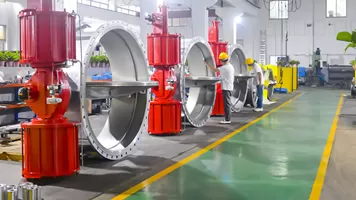Valves are critical components in industrial systems, responsible for controlling the flow of fluids and gases. Despite their importance, valve leaks are common and can cause significant operational issues, ranging from decreased efficiency to safety hazards. These leaks often arise due to a variety of factors, such as wear and tear, corrosion, and improper installation. By understanding these common causes, businesses can take proactive steps to prevent valve leaks, minimize downtime, and ensure smooth operations. This article explores the primary causes of valve leaks and offers effective prevention strategies.
Wear and Tear
Valves, like any mechanical component, experience wear over time due to constant operation. The repetitive motion of opening and closing leads to the degradation of key parts such as seals, gaskets, and seats. As these components wear down, they lose their ability to maintain a tight seal, resulting in leaks. Common signs of wear-induced leaks include fluid seepage around valve connections and decreased system pressure. To prevent leaks caused by wear and tear, regular inspection and timely replacement of worn parts are crucial. Predictive maintenance schedules can help identify potential issues before they lead to failure.
Corrosion
Corrosion is another major cause of valve leaks, especially in environments where valves are exposed to harsh chemicals or moisture. Over time, corrosive substances can erode valve components, weakening their structure and causing leaks. Different types of corrosion, such as chemical, galvanic, or crevice corrosion, can occur depending on the materials used and the operating environment. Preventive measures include selecting valves made from corrosion-resistant materials, applying protective coatings, and conducting routine inspections to detect early signs of corrosion. Ensuring that valves are installed in well-ventilated areas or using desiccants can also reduce the risk of corrosion.
Improper Installation
Even the best valve designs can fail if they are not installed correctly. Improper installation, such as misalignment or insufficient tightening of bolts, can lead to leaks. For instance, if a valve is not aligned properly with the piping system, it can create gaps where fluids can escape. Additionally, over-tightening or under-tightening fasteners can damage seals, compromising their effectiveness. Training personnel in proper installation techniques and using specialized tools for alignment and tightening can help prevent leaks related to installation errors. It is also essential to follow manufacturer guidelines for torque specifications to avoid overloading valve components.
Operating Beyond Valve Specifications
Valves are designed to operate within specific pressure, temperature, and flow limits. Exceeding these limits can cause significant damage to the valve components, leading to leaks. For example, operating a valve under excessive pressure can cause seals to fail, while extreme temperatures can warp valve seats. Signs of operating beyond valve specifications include unusual vibrations, pressure drops, and leaks. To prevent this, it is essential to monitor operating conditions closely and ensure that valves are selected based on the specific demands of the application. Installing sensors to track pressure and temperature levels in real-time can help prevent overloading and maintain valve integrity.
Reasonable problem avoidance
Valve leaks are often the result of wear and tear, corrosion, improper installation, or operating beyond design specifications. However, with proactive measures such as regular maintenance, proper valve selection, correct installation practices, and monitoring of operating conditions, these leaks can be prevented. By addressing the root causes of valve leaks, businesses can minimize downtime, enhance safety, and prolong the lifespan of their valve systems, ensuring smooth and efficient operations.


